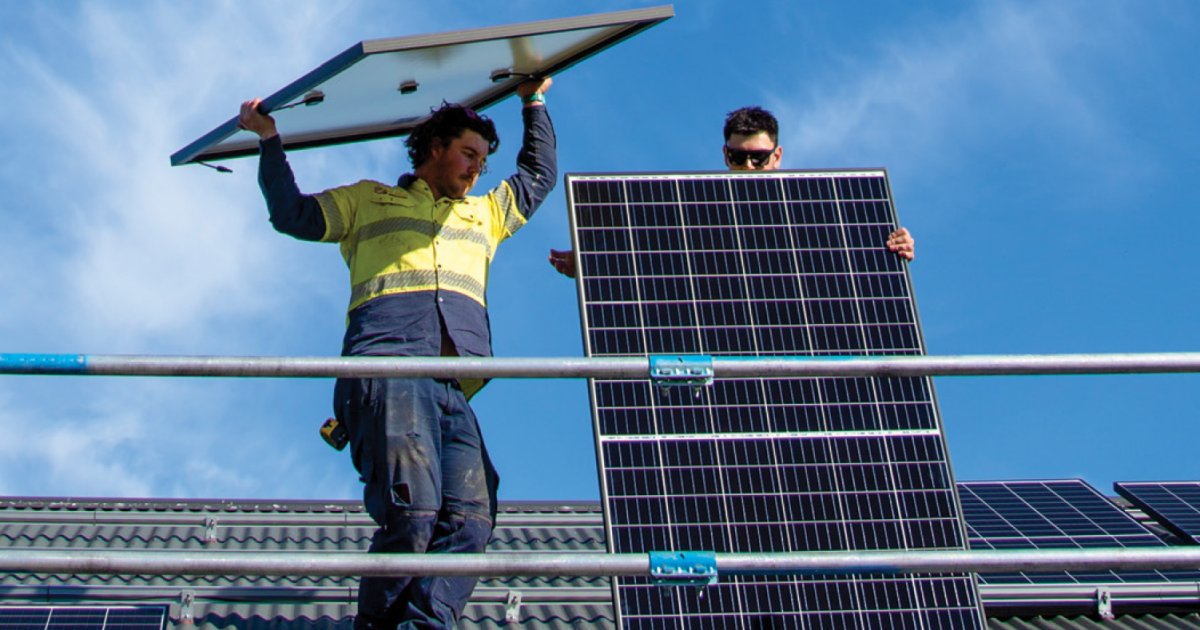
Mandatory and recommended requirements in 2022-23 for retailers and installers participating in Victoria’s Solar Homes and Solar for Business Programs were published yesterday. Here’s a summary of what’s happening.
Coming into effect today, there are no new mandatory requirements, but a number of new “recommended requirements” – is that an oxymoron?
Common Smart Inverter Profile Conformance
It’s recommended systems have the capability to conform to an API in accordance with Australia’s Common Smart Inverter Profile (CSIP-AUS) and the IEEE 2030.5-2018 standard, in order to help to standardise interoperability. CSIP-AUS compliance could become compulsory down the track.
A Farewell To Rooftop DC Isolators – And Good Riddance
Rooftop DC isolators were introduced as a mandatory added safety mechanism, but ironically were responsible for a bunch of fires where components were of poor quality, poorly installed or not properly maintained. Australia was the only country that required their use. While the related standard containing the requirement also applied in New Zealand, the clever Kiwis didn’t make them compulsory.
Back over this side of the ditch; after a lengthy push and some initial mayhem, sanity finally prevailed and they are no longer required *if* non-load break DC disconnection points are installed where appropriate.
String Inverters And Arc Fault Protection
It’s recommended Arc Fault Protection Equipment (AFPE) be implemented to IEC 63027 where a string inverter system is installed; to reduce likelihood of sustained arcing – electrical current jumping from one conductive point to another.
Solar Battery “Cross-Phasing” Prevention
Solar battery systems installed at multi-phase sites should be installed in a way to prevent “cross phasing”, which can result in network unbalance and other network headaches. Solar Victoria also notes ensuring a solar power system and battery storage are on the same phase for multiphase customers will improve direct self-consumption.
Victoria Energy Compare Plug
The agency recommends solar retailers flag with what will be new system owners the existence of the Victorian Energy Compare website and to recommend utilising its solar saver tool before installing a system. This can be used to compare the proposed solar power system to the prospective owner’s actual usage and tariff structure. The calculator uses NMI (National Mering Identifier) specific data.
Further detail and additional resources relating to all of the above can be found in the full 2022-23 Solar Victoria Notice To Market, or in a more detailed summary here.
Victorian Solar Panel Rebate In 2022-23
The state’s solar energy incentive programs are still going strong, and will remain very generous for the foreseeable future.
Victoria’s solar panel rebate for households (and rental properties) will continue to offer up to $1,400 off the cost of an eligible system. While it is called a “rebate”, it’s actually an up-front discount for the purchaser. This is available in addition to the national “solar rebate” – also an up-front discount. There’s also the option of an interest-free loan.
As well as the solar panel rebate, there are incentives for batteries, electric vehicles, solar hot water, VPP participation and more.
Eligible businesses with up to 50 employees can receive up to $3,500 towards the installation of a solar power system, and also apply for zero interest loans of between $1,000 and $5,000. However, once the current batch of rebates is exhausted, the maximum rebate value drops to $1,750. At the time of publishing, there were still 3,151 rebates available at the higher maximum value.

 RSS - Posts
RSS - Posts



Speak Your Mind